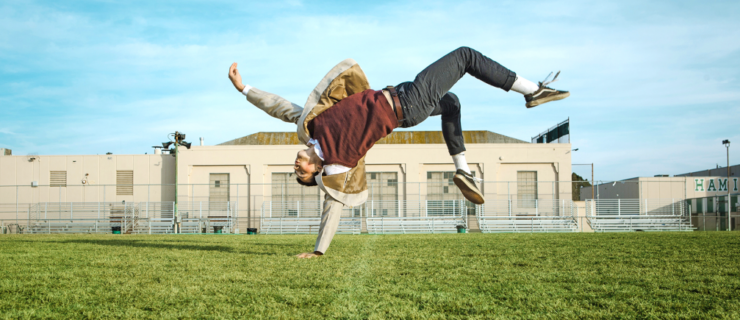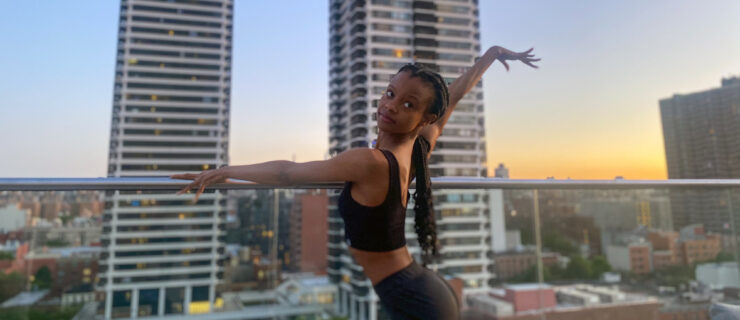Inside The Vaganova Academy
The Vaganova Ballet Academy, based in St. Petersburg, Russia, is nearly as old as ballet itself. Through the centuries, czars and governments have come and gone—but the Academy has remained. It’s where legends like George Balanchine, Rudolf Nureyev and Natalia Makarova did their first pliés. It’s also where Agrippina Vaganova developed her groundbreaking methodology.
So what is it like to be a student there today, and to feel the weight of history on your shoulders every time you step up to the barre? DS takes a peek inside one of the most distinguished ballet training institutions in the world.
A Glittering Tradition
Two hundred and seventy-two years ago, the Russian empress Anna Ivanovna issued a royal decree to start a ballet school in St. Petersburg. The first class had only 12 boys and girls. But over the course of the next 100 years, the school blossomed. It became the principal training ground for its affiliated company, the Imperial Ballet, where choreographer Marius Petipa created ballets like Don Quixote and Sleeping Beauty.
The biggest development in the school’s more recent past was the arrival of Agrippina Vaganova. A graduate of the school and a former dancer in the Imperial Ballet, Vaganova found her true calling as a teacher. She was hired in 1921—the same year Balanchine graduated—and later became the director of both the school and the affiliated company, which by then had been rechristened the Maryinsky Ballet. (The school was renamed for Vaganova in 1957, six years after her death.)
“Today, the whole school is full of this spirit of history,” says Irina Tolchilshikova, 18, who is in her eighth year of training at the Academy. The hallways of the school are lined with photos of classes from the last 150 years, an inspiring—and intimidating—reminder for the students of the great dancers who came before them.
The Vaganova Style
During her tenure, Vaganova created a syllabus that is now the standard in Russian training. “Vaganova was a pioneer, and we owe her a lot in the ballet world,” says John White, a former National Ballet of Cuba dancer who teaches the Vaganova syllabus at the Pennsylvania Academy of Ballet and gives Vaganova workshops across the country. According to White, one distinguishing aspect of the technique is its emphasis on the arms, hands and eyes. “There is a total involvement of every part of the person in each and every movement,” he says. “The eyes, the upper body, the facial expression and the arms and hands are all connected. It’s different from some of the other schools, which often focus on the legs and feet.”
This isn’t to say that the legs and feet aren’t important. To Vaganova, “everything leads to allegro,” White says. “She felt that adagio is nice—it gives the eye a chance to rest, and has beautiful poses and positioning. But dancing becomes true dancing when you leave the earth and fly.”
To maintain the Academy’s style and technical standards, all of its teachers and coaches receive extensive training before they are allowed in the classroom. “It is much the equivalent of the American master’s degree in that they study every aspect of training dancers of all ages, from 10-year-old beginners to 18-year-old preprofessionals,” White explains.
Student Life
From dawn to dusk, the Vaganova student’s life revolves around training, a point driven home by the fact that the dormitories and dance studios are all part of the same immense, majestic facility. Most students head to the dance classrooms—with their raked, usually wooden floors, sprinkled with water, rather than rosin, to prevent slipping—early in the morning to warm up before their 9:30 am technique class. Then they have academic classes, followed by another dance class. In the evenings, there are rehearsals for various student concerts and for the small roles they perform with the Maryinsky Ballet.
In addition to their dance classes, students at the Academy study history, algebra, geometry, geography, biology, Russian language and literature, French, English, physics, chemistry, music, music history and ballet history. Sometimes academics and ballet intersect, as when students are required to write essays about their technical mistakes. “There is usually a discussion with the coach regarding each mistake and how to correct it,” says school principal Vera Dorofeeva. “Classical ballet is a long road to perfection, and the student must understand that every step is important.”
It’s not surprising that Irina says her biggest challenge is overcoming tiredness. “I have very little free time during the school year—only on Sundays,” she says. And like most Vaganova students, she’s relentless about pushing herself. “If something isn’t working, I can’t give up,” she says. “If I don’t manage to do the movement the first, second or third time, maybe I’ll manage it by the sixth time.” In fact, after a long day of classes, Irina usually returns to the studio to do extra stretching and technical drills. “The most important thing,” she says, “is to overcome difficult moments and win.”
Fierce Competition
It would be a huge understatement to say that getting a coveted spot at the Academy is a challenge. Between 4,000 and 7,000 children ages 8 to 10 audition annually for about 70 openings in the beginner class. And despite this extreme selectivity, getting into the Academy doesn’t guarantee a professional career. It doesn’t even guarantee graduation. Only 20 or so students actually complete the program and join companies.
In order to proceed to the next class, students must pass an annual exam. “There are fewer positions in each subsequent year,” explains events coordinator Olga Abramova. “This means that there is competition for each student’s position.” Former Maryinsky Ballet dancer Dmitry Trubchanov, currently a soloist at Colorado Ballet, began studying at the Academy at age 8 and recalls that during his first year, there were 10 boys in his class. By the time he graduated, there were three. “It’s tough. If the staff doesn’t see you progress, then you’re dismissed,” he says. “It’s easier for them to be so harsh because the government supports the school, so they don’t have to worry about making money from tuition.” (The school is still fully state-funded; all of its 320 students attend for free.)
At the end of their training, students take a state graduation exam attended by artistic directors from various Russian companies looking to fill open spaces. “Sometimes a student may receive more than one invitation to join a company,” Abramova says. “The most desired company is the Maryinsky Theatre [known in the U.S. as the Kirov Ballet]. However, some students not accepted by the Maryinsky may go to the Mikhailovsky Theatre or the Eifman Ballet.” Others, like Trubchanov, decide to dance with U.S. companies, while extraordinarily gifted alums like Diana Vishneva and Svetlana Zakharova may become stars of an international scale, performing with companies all over the world.
Looking Forward
Though Russian ballet has seen a lot of changes since the dissolution of the Soviet Union in 1991, the Academy remains a strong symbol of the country’s glorious ballet tradition. It’s also improved its already impressive international reputation, especially since the 1999 appointment of former Maryinsky dancer Altinai Asylmuratova as the school’s artistic director. “Because of her extensive contacts, representatives from foreign ballet schools often visit us,” says press secretary Julia Telepina. “This allows the students to broaden their outlook and introduces them to ballet trends in other countries.” There are even opportunities to tour abroad. Vaganova students have performed in the U.S., Japan and Italy.
And the Academy continues to evolve. Students can now study for two diplomas: ballet dancer and bachelor of performing arts. Additional classes in performing arts management and choreography have been added recently. Dorofeeva is also overseeing a restoration of the Academy’s facilities and theater.
“The Academy has witnessed many changes of political power, and has seen revolutions and wars,” Telepina says. “Yet, despite all the hardships, it has preserved its place in the culture of the world.”
A Typical Day At The Vaganova Academy
9:30–11:00 am: ballet technique
11:00 am–1:00 pm:
academic subjects
1:00 pm:
lunch
2:00 pm:
character dance or dance history
4:00 pm:
academic subjects
5:00 pm:
rehearsal
Note: Special thanks to Olga Abramova for her translation assistance.



